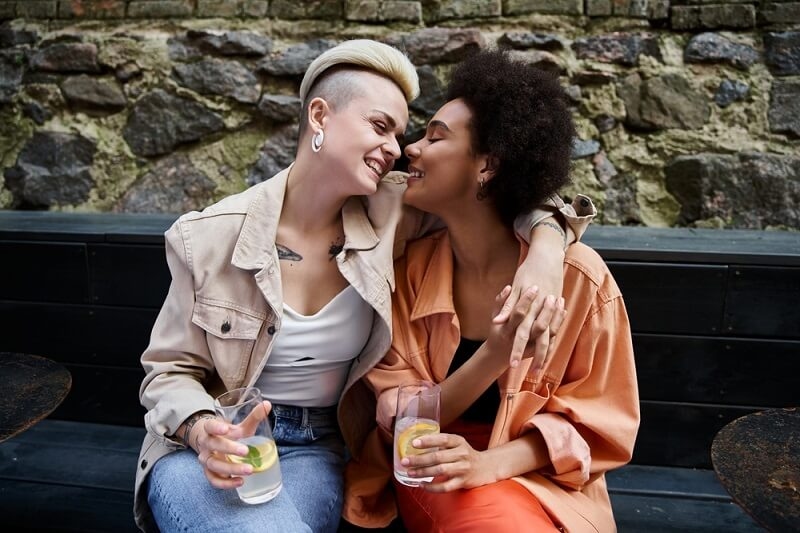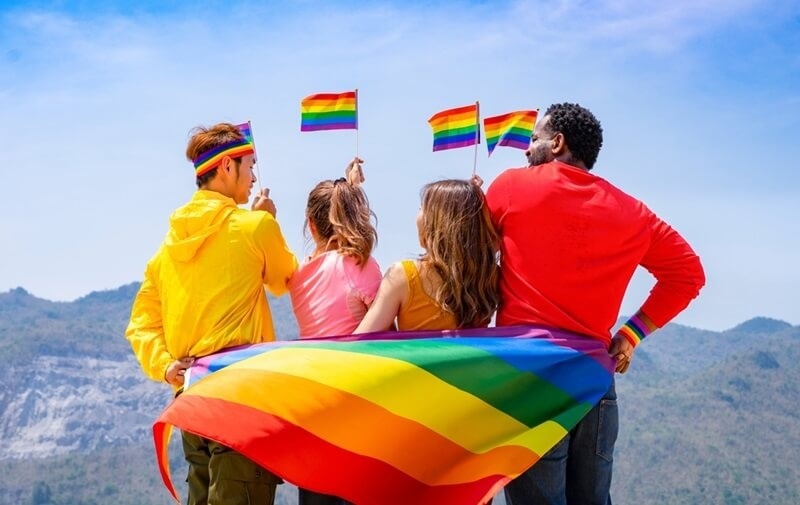Bisexuality: A Comprehensive Guide to Meeting and Connecting

Bisexuality is the attraction to more than one gender, and it plays a crucial role in the spectrum of sexual orientations within the LGBTQ+ community. Bisexual individuals often face unique challenges, including misunderstandings and stereotypes from both heterosexual and homosexual communities. Despite these challenges, bisexuality is an integral part of the diverse and inclusive fabric of the LGBTQ+ community, fostering a broader understanding of human sexuality.
Importance of Building a Supportive Bisexual Community
Creating a supportive and inclusive community for bisexual individuals is essential for their well-being and mental health. A strong community offers a safe space for bisexuals to share their experiences, find acceptance, and build meaningful connections. This support network can help combat the isolation and bi-erasure that many bisexual people experience, fostering a sense of belonging and solidarity.
Meeting Other Bisexual People Online
Using Dating Websites and Apps
Signing Up for Bisexual Dating Websites
Joining dating websites specifically designed for bisexual individuals can be an effective way to meet like-minded people. These platforms cater to the unique needs and preferences of bisexuals, offering a more targeted and welcoming environment for dating and connections.
Creating an Engaging and Genuine Profile
When signing up for bisexual dating websites, it is important to create a profile that authentically represents who you are. Highlight your interests, values, and what you are looking for in a partner. Avoid overloading your profile with selfies; instead, focus on providing a well-rounded picture of your personality and preferences.
Recommendations for Popular Dating Websites and Apps
Several dating websites and apps are popular among bisexuals, including OkCupid, Tinder, and HER. These platforms have inclusive features that cater to the bisexual community, making it easier to find potential matches. Reading reviews and researching each platform can help you choose the one that best suits your needs.
Joining Social Media Groups
Finding and Joining Bisexual Groups on Platforms Like Facebook
Social media platforms like Facebook host numerous groups dedicated to bisexual individuals. These groups provide a space for members to share experiences, seek advice, and connect with others who understand their journey. To find these groups, simply search for bisexual groups in your area or with similar interests.
Engaging in Community Activities and Discussions
Once you join a bisexual group on social media, actively participate in discussions and community activities. This engagement helps you build relationships and gain support from others who share similar experiences. It also provides opportunities to meet potential friends or partners within a supportive environment.
Participating in Online Forums and Discussion Boards
Benefits of Joining Bisexual-Specific Forums
Online forums and discussion boards are valuable resources for bisexual individuals seeking community and support. These platforms offer a space to discuss bisexuality openly, share personal stories, and receive advice from others who understand their experiences.
Strategies for Creating a Captivating Username and Profile
When joining online forums, choosing a captivating username and creating a thoughtful profile can help attract like-minded individuals. Use terms that reflect your personality and interests, and avoid names that might be perceived as off-putting or irrelevant.
Meeting Other Bisexual People In-Person

Attending LGBTQIA Events
Importance of Participating in Local LGBTQIA Events Like Parades and Festivals
Participating in local LGBTQIA events such as parades and festivals is a great way to meet other bisexual individuals. These events celebrate diversity and provide a safe space for people to express their identities openly. They also offer opportunities to connect with various LGBTQIA community members and allies.
Examples of Events and How to Find Them
To find local LGBTQIA events, check community centers, social media, and LGBTQIA organization websites. Events like Pride parades, LGBTQIA film festivals, and community fundraisers are excellent opportunities to meet new people and engage with the community. Additionally, attending events such as LGBTQ+ wedding celebrations can provide unique opportunities to connect with and celebrate alongside the community.
Joining Local LGBTQIA Clubs and Organizations
Exploring Clubs at Universities, Community Centers, and Churches
Many universities, community centers, and churches host clubs and organizations dedicated to LGBTQIA members. These clubs offer both social and activist opportunities, allowing members to connect and advocate for LGBTQIA rights and visibility.
The Dual Social and Activist Nature of These Groups
LGBTQIA clubs often balance social activities with activist initiatives. Members can participate in events, meetings, and campaigns that promote equality and support for the LGBTQIA community. This dual focus helps build a strong, engaged, and supportive network.
Frequenting LGBTQIA-Friendly Venues
Tips for Finding and Engaging at Gay Bars and Other Community Spots
Gay bars and other LGBTQIA-friendly venues are excellent places to meet bisexual individuals in a relaxed and welcoming environment. Look for well-known spots in your area and consider attending events or theme nights that cater to the LGBTQIA community.
Utilizing Platforms Like Meetup.com to Find Events and Groups
Meetup.com is a valuable resource for finding LGBTQIA meetups and events in your area. Joining these groups allows you to connect with others who share your interests and participate in community activities designed to foster inclusivity and support.
Observing and Approaching Potential Bisexual Individuals
Recognizing Body Language Cues
Understanding and recognizing body language can provide subtle hints about a person's sexual orientation. Observing how someone interacts with people of different genders can offer insights into their potential bisexuality.
For instance, look for signs of attraction and affection toward both sexes, such as prolonged eye contact, physical proximity, and engaging conversations with people of multiple genders. These non-verbal cues can often indicate an openness to diverse romantic and sexual relationships. These observations are also beneficial for understanding dynamics within same-sex couples, as similar body language cues can reveal the depth of their connection.
Starting Conversations with Sensitivity
Initiating conversations about sexual orientation requires a delicate and respectful approach. It's important to create a safe and non-judgmental space where individuals feel comfortable sharing their identities. Begin with open-ended questions that encourage dialogue without prying too deeply.
For example, you could ask, "What kind of people do you find yourself attracted to?" rather than directly inquiring about their sexual orientation. This approach allows the individual to share as much or as little as they are comfortable with, fostering a more genuine and respectful conversation.
Tips for Living in Small Towns
Connecting Online
Living in a small town can sometimes make it challenging to meet other bisexual individuals due to limited social circles and fewer LGBTQIA-friendly spaces. However, the internet offers a plethora of opportunities to connect with like-minded people.
Online platforms and apps specifically designed for the LGBTQIA community can help bridge this gap. Websites and apps such as OkCupid, HER, and social media groups on Facebook provide spaces where bisexual individuals can connect, share experiences, and form meaningful relationships regardless of geographical limitations.
Finding Local Safe Spaces
Creating or finding local safe spaces is crucial for fostering a supportive community in small towns. Look for existing LGBTQIA-friendly venues, such as inclusive cafes, community centers, or libraries that host LGBTQIA events.
If such spaces are scarce, consider starting your own community meetups or support groups. These gatherings can be informal, such as coffee meetups or discussion groups, providing a safe and welcoming environment for bisexual individuals to connect and support each other.
You may also like: Discovering Your True Sexual Orientation: Are You Gay?
Conclusion
In summary, there are several effective methods for meeting and connecting with other bisexual individuals. Observing body language and initiating sensitive conversations can help identify and approach potential bisexual individuals. Utilizing online platforms and apps can overcome geographical limitations, making it easier to connect with like-minded people. Additionally, finding or creating local safe spaces fosters a supportive community where bisexual individuals can feel accepted and valued.
This content was created by AI























